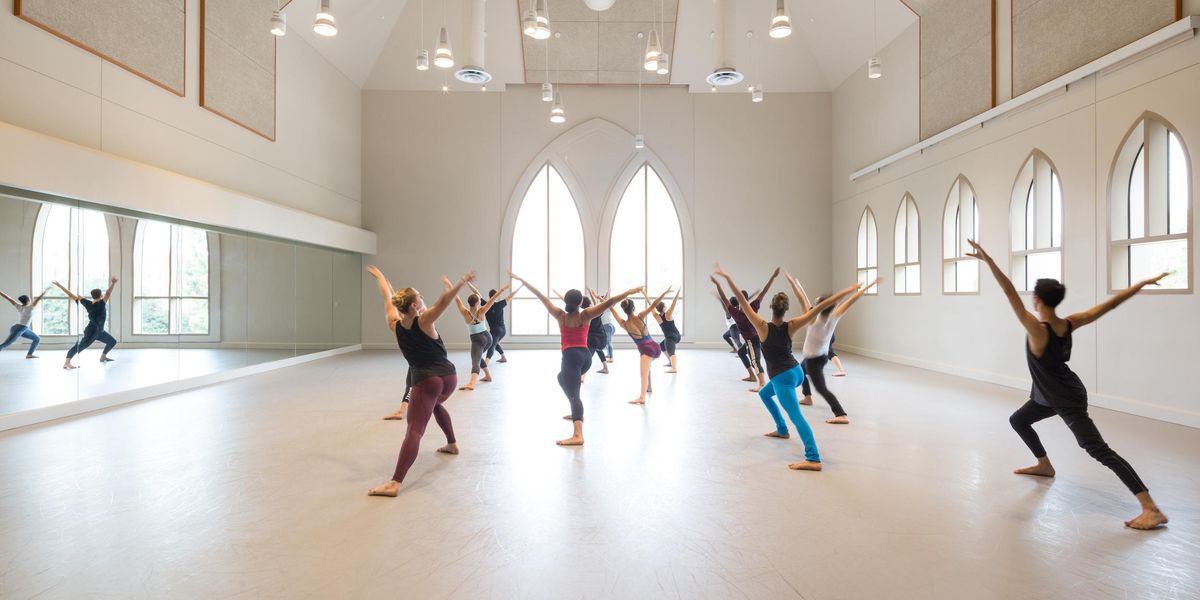Naharin's Influence
Eri Nakamura and Adi Zlatin in
Sadeh21 (2011). Photo by Gadi Dagon.
Last year Ohad Naharin celebrated two decades at the helm of Batsheva, a short time considering the huge impact his work has had on the local and international dance community. Prior to Naharin’s triumphant return from New York in 1990, contemporary dance in Israel was an amalgamation of styles and trends adopted from Europe and the United States. Though a generation of choreographers was growing within the country, the overall scene had failed to coalesce.
Naharin’s arrival as artistic director of Batsheva set the wheels in motion for a monumental change in the country, one that would place Israel in the center of the international dance map and bring contemporary dance into the forefront of Israeli culture.
His approach was, at the time, radically at odds with the cookie-cutter expectations placed on company dancers. Naharin asked his dancers to expose their vulnerability, sexuality, and intensity both in the studio and onstage. Batsheva’s performances presented individuality in its most raw form. His dances provided a window into the turmoil of daily life, inspiring his Israeli peers to match his candidness.
For the past 22 years, dance in Israel has been represented globally by Naharin’s artistic sensibility, and Israeli dance companies are defined by their relationship to his style either in their similarity to it or their divergence from it. His influence can also be identified in the works of leading choreographers around the world, including former Batsheva dancers Inbal Pinto (Tel Aviv), Hofesh Shechter (London), and Andrea Miller (Gallim Dance/New York).
The Batsheva company is now synonymous with unimaginably free limbs, a flow that connects disjunctive movements, and piercing stares into the audience. Navigating between charged stillness and vibrant explosions of arms and legs, Naharin’s choreographies are dynamic, engaging, and insightful. An example of this winning blend took audiences by storm in 1993, when Naharin unveiled Anaphaza. The piece, which includes the famous section “Echad Mi Yodea” (originally from Kyr, 1990), where dancers burst out of their chairs, sloughing off layers of their black suits and hats, has become a staple for the company and a calling card for the volatile, in-your-face Israeli dance aesthetic. This section is also part of Naharin’s collage Minus 16, which is now in the repertoires of Hubbard Street Dance Chicago, Alvin Ailey American Dance Theater, Nederlands Dans Theater II, and Barcelona’s IT Dansa.
Today, about half of the company’s performances each year are given outside of Israel. Their deluxe facility in the Suzanne Dellal Center in South Tel Aviv serves as a beacon for foreign performers hungry to study with or audition for Naharin.
Naharin’s offstage revolution, Gaga, which offers dancers an alternative to morning technique classes, has caught on like wildfire, changing the way dancers warm up. In New York City, Gaga classes are offered regularly at Mark Morris Dance Center, The Ailey Extension, and Peridance Capezio Center. (Juilliard, Harvard University, and other schools have also held Gaga classes.) The growing list of studios and companies seeking the deliciousness of Gaga led Naharin to establish a one-year Gaga teacher-training course in Tel Aviv last year.
The first moments of a Gaga session look more like a tai chi practice than a dance class. For one, there are no mirrors in the studio. The participants, whether they are “people” or “dancers” (Gaga classes are divided into two categories: “people,” or those with no prior dance experience, and professionals) stand facing their teacher, doing something called “floating” (moving as if in water) for about 10 minutes. The participants are in constant motion. They are not taught sequences or exercises; rather each student embarks upon a journey of personal research. They explore a series of images and sensations such as moving from their “moons” (the joints at the base of the fingers and toes) or harnessing their “lena” (the energy source in the lower abdomen).
Any company that learns a Naharin piece is required to prepare by practicing Gaga. This encourages the dancers to forgo the strict lines of ballet in favor of finding pleasurable, free, and authentic movement. The effects of this individualistic training can also be seen in the subtle but immediately noticeable change in the performance of dancers in companies such as Cedar Lake Contemporary Ballet (New York), Cullberg Ballet (Sweden), or Hubbard Street (Chicago) in Naharin’s pieces—where highly trained dancers step out of prescribed moves and offer gutsier, groovier, more exposed sides of themselves.




